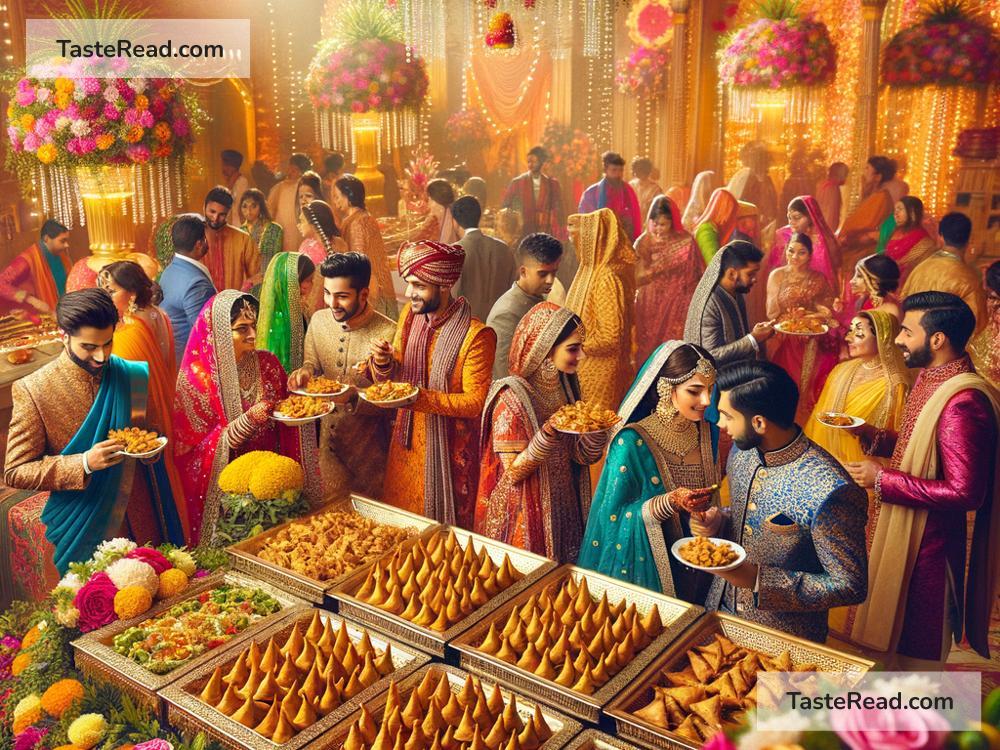The Cultural Relevance of Samosas at Indian Weddings
Indian weddings are renowned for their vibrant celebrations, colorful traditions, and mouthwatering food. Among the countless dishes served, one humble snack stands out for its universal appeal and deep cultural significance—the samosa. Be it a grand palace wedding or a cozy backyard ceremony, samosas always find their way to the dining tables and hearts of guests. But why are samosas such an essential part of Indian weddings? Let’s dive into their cultural relevance, their history, and the role they play in one of life’s most joyful celebrations.
What Is a Samosa?
For the uninitiated, a samosa is a triangular or cone-shaped pastry that is fried or baked until crisp. Inside, there’s a flavorful filling, commonly made from spiced potatoes, peas, and occasionally lentils. Some samosas also include meat or cheese fillings, depending on regional preferences. They’re commonly served with chutneys—mint, tamarind, or yogurt-based dips that enhance their flavor.
Samosas are beloved for their flaky texture, rich filling, and spicy kick. But beyond their taste, they hold a special spot in the social fabric of India, especially during major gatherings like weddings.
An Icon of Unity and Festivity
Indian weddings are not just about two people coming together but about the joining of families, traditions, and communities. Food plays a huge role in fostering these connections, and samosas, with their universal appeal, act as a unifying element.
Whether you’re from North India or South India, whether you’re Hindu, Muslim, Sikh, or Christian, chances are you love samosas. This snack transcends regional and religious boundaries, making it a perfect addition to wedding celebrations that bring diverse groups of people under one roof.
Samosas are also a cultural equalizer—they’re loved by people from all walks of life, from the youngest in the family to the oldest. At a wedding, you’ll often see kids chasing servers with trays of hot samosas, while elders savor every bite with a dash of mint chutney. Simply put, they have a magic way of delighting everyone.
The Warm Welcome of Samosas
Indian hospitality is legendary, and weddings are its ultimate showcase. One of the first ways guests are welcomed at the venue is through food—usually small bites and snacks served with tea or drinks. Samosas are almost always part of this welcome spread.
A tray of steaming hot samosas, paired with a cup of masala chai, sets the tone for the day’s festivities. The familiarity of this snack instantly makes people feel at ease, like the opening of a warm, joyous chapter. For international guests or non-Indian attendees who might be unfamiliar with some elements of the wedding, samosas serve as a welcoming bridge to Indian cuisine.
Samosas as a Symbol of Celebration
In Indian culture, food is deeply intertwined with emotions and milestones. Offering something delicious is a way of marking significant life events, and weddings are perhaps the most significant of all. Samosas, with their vibrant spices and satisfying crunch, embody the celebratory spirit perfectly.
At bigger weddings, where servers move around the venue offering snacks to guests, samosas are usually the first choice. Their portability makes them ideal for an occasion where guests are constantly moving—talking to relatives, posing for pictures, or watching rituals. Whether eaten while standing, sitting, or on the go, these bite-sized wonders ensure guests stay energized and engaged.
A Nostalgic Comfort Food
Indian weddings can sometimes be overwhelming—the rituals, clothes, music, and grandeur can all feel larger than life. Amid all the excitement, the simple, nostalgic comfort of a samosa can ground people. For many, especially those returning home for a wedding after living abroad or elsewhere, biting into a samosa brings back memories of childhood evenings, family gatherings, and festive occasions.
This emotional connection adds depth to the wedding experience. Guests not only enjoy the food for its flavor but also for the warmth and nostalgia it evokes.
Modern Twists on Traditional Samosas
While the classic potato-filled samosa remains unbeatable, modern Indian weddings often showcase innovative versions of this iconic snack. Chefs experiment with fillings like paneer (Indian cottage cheese), chicken tikka, spinach and cheese, or even sweet fillings like chocolate and nuts. These contemporary twists keep samosas exciting while respecting their traditional essence.
Innovative presentations are also common. At luxury weddings, samosas might be served in ornate platters or paired with exotic dips. Some chefs deconstruct samosas into bite-sized pieces, offering them as appetizers with a fine dining flair. Despite these updates, the essence remains the same—a crispy, flavorful snack that makes everyone smile.
Conclusion
Samosas are more than just food at Indian weddings—they’re a symbol of hospitality, nostalgia, and the joy of togetherness. They bridge cultural gaps, evoke cherished memories, and perfectly complement the festive mood of a wedding. Whether prepared in the traditional way or with modern-day variations, they remain a cherished part of the culinary landscape.
So next time you attend an Indian wedding and a samosa is placed on your plate, savor it. It’s not just a snack—it’s a small piece of culture, love, and celebration wrapped in flaky pastry and served with care.


